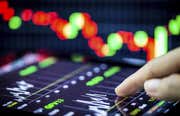The report is issued by the Census Bureau of the Department of Commerce each month. The report provides the dollar value of factory orders for both durable and non-durable goods. Durable goods are defined as those with an expected life of three years or longer. Factory orders are a key indicator of demand for industrial products. The official name of the report is “Manufacturers' Shipments, Inventories and Orders.”
The report contains the Durable Goods Report information, which is released about one week prior (but with revisions), and introduces non-durable items into the mix, representing industries such as apparel and food products. The Factory Orders Report is meant to capture the overall health of the entire manufacturing sector, measuring new orders, inventories, total shipments and unfilled orders for the month surveyed.
Statistics are displayed in current dollars and as percent changes from prior month and prior year. As with the Durable Goods Report, the indicator derives most of its value as a supply/demand indicator; inventory levels can be compared to shipments, new orders and other indicators of consumer demand such as retail sales and gross domestic product (GDP).
Importance for Investors
Factory orders are an important economic indicator. An increase in factory orders usually accompanies an upswing or continued upswing in the economy. Consumers are demanding more goods which requires retailers to order more from factories and suppliers. They may be feeling good about their financial situation and are more willing to purchase both durable and non-durable items. Also, continued increases in factory orders is often a sign of increased inflation on the horizon.
A contraction in factory orders, on the other hand, can indication that the economy is contracting, consumers are less willing to make purchases, and there is less need for businesses and factories to order supplies.
The Factory Orders Report is more useful than the Durable Goods Report for examining trends within industries. While only "computer equipment" may be counted in the Durable Goods Report, the Factory Orders Report will show separate figures for computer hardware, semiconductors, monitors, etc. This is mainly due to the speed at which the (advance) Durable Goods Report is released, which makes it more timely but also more vague.
Strengths of the Factory Orders Report:
- Provides good industry breakdowns within manufacturing various manufacturing sectors.
- Data is provided in both raw and with seasonal adjusted formats.
- Provides forward-looking data such as inventory levels and new business, which may count toward future earnings periods.
Weaknesses of the Factory Orders Report:
- Rehashes some information on durables manufacturing.
- Difficult to make comparisons with indicators that report on volume rather than price.
- Not very timely, reporting on two months prior.
Economic Indicators: Gross Domestic Product (GDP)
-
 Investing
InvestingGlobal Consumer Durables: Exploring Revenue Trends and Fundamentals
Examine geographic revenue data from the consumer durables sector to identify catalysts and trends. -
 Investing
InvestingEconomic Indicators You Should Know for Investment
Economic indicators are some of the most valuable tools investors can place in their arsenals. Understand these investing tools for better market returns. -
 Retirement
RetirementThe Importance of Durable Financial Power of Attorney
Having a durable financial power of attorney in place can save you from having the court decide who handles your finances when you can't. -
 Investing
InvestingThe Basics of Trading a Stock: Know Your Orders
Taking control of your portfolio means knowing what orders to use when buying or selling stocks. -
 Investing
InvestingCan Whirlpool Remain Durable?
Tariffs and concerns around Friday's durable goods report could create headwinds for Whirlpool (WHR). -
 Investing
InvestingLeading Economic Indicators Predict Market Trends
Leading indicators help investors to predict and react to where the market is headed. -
 Trading
TradingThe Fundamentals Of Forex Fundamentals
There are many economic indicators that can be used to evaluate forex fundamentals. These indicators can be an invaluable resource for any currency trader.



